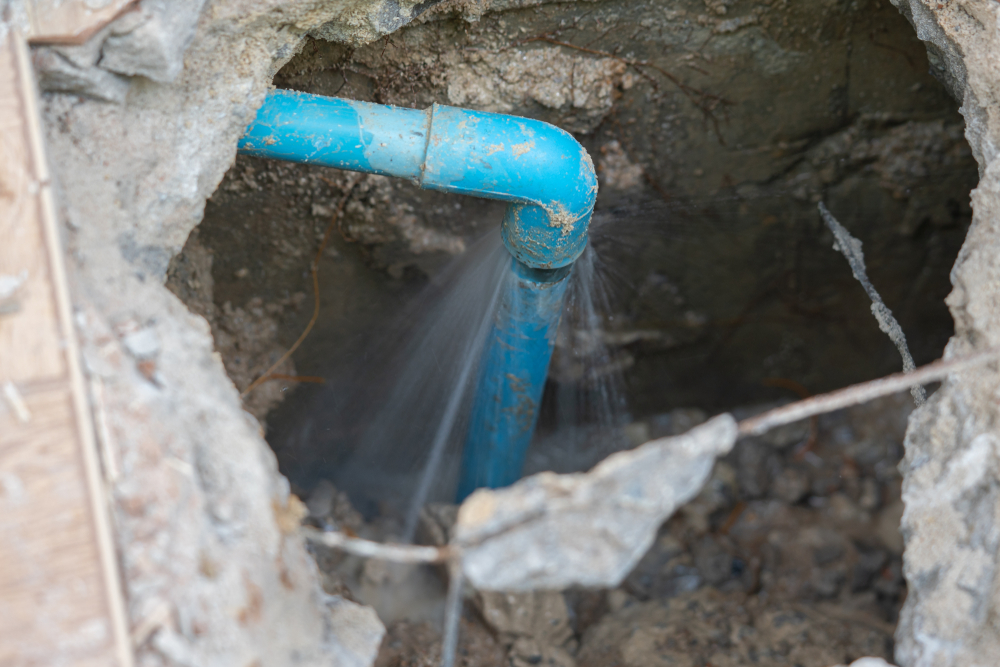Detecting Hidden Water Line Leaks: Six Practical Detection Tricks
Detecting Hidden Water Line Leaks: Six Practical Detection Tricks
Blog Article
Presented here in the next paragraph you can discover some sound material with regards to Finding hidden leaks.

Early detection of dripping water lines can reduce a possible disaster. Besides saving you money, it will certainly lessen the irritation and also disappointment. The minute you discover a leakage, calling your plumber for repair work is the most effective service. Some little water leaks might not be noticeable. Below are some hacks that help if you can not find it with your nude eyes.
1. Analyze the Water Meter
Every residence has a water meter. Checking it is a guaranteed manner in which aids you discover leaks. For starters, switch off all the water resources. Guarantee nobody will certainly purge, use the faucet, shower, run the cleaning maker or dishwasher. From there, go to the meter as well as watch if it will certainly transform. Since no one is using it, there must be no activities. That suggests a fast-moving leakage if it relocates. Furthermore, if you detect no changes, wait an hour or more and inspect back once again. This indicates you may have a sluggish leakage that might also be below ground.
2. Inspect Water Intake
Examine your water costs as well as track your water consumption. As the one paying it, you need to see if there are any type of inconsistencies. If you find sudden changes, despite your intake coinciding, it suggests that you have leaks in your plumbing system. Bear in mind, your water bill ought to fall under the very same variety monthly. A sudden spike in your costs shows a fast-moving leakage.
A consistent increase every month, also with the same behaviors, shows you have a slow-moving leak that's additionally slowly rising. Call a plumber to completely examine your building, particularly if you really feel a warm location on your floor with piping below.
3. Do a Food Coloring Test
When it comes to water intake, 30% comes from toilets. If the color in some way infiltrates your dish during that time without flushing, there's a leak in between the container and dish.
4. Asses Outside Lines
Don't forget to inspect your exterior water lines too. Test spigots by affixing a garden hose. Must water seep out of the connection, you have a loosened rubber gasket. Replace this and also guarantee all links are tight. It will assist get it skillfully examined as well as maintained each year if you've got a sprinkler system. One tiny leak can squander tons of water and also increase your water bill.
5. Evaluate the situation and examine
Property owners ought to make it a practice to inspect under the sink counters and even inside cupboards for any bad odor or mold and mildew growth. These two red flags indicate a leakage so punctual attention is required. Doing regular examinations, also bi-annually, can save you from a major problem.
Examine for discolorations and damaging as a lot of home appliances and pipelines have a life span. If you suspect dripping water lines in your plumbing system, don't wait for it to escalate.
Early detection of leaking water lines can alleviate a potential calamity. Some small water leaks might not be visible. Examining it is a surefire means that assists you discover leakages. One tiny leakage can waste bunches of water as well as increase your water bill.
If you believe leaking water lines in your plumbing system, do not wait for it to intensify.
WARNING SIGNS OF WATER LEAKAGE BEHIND THE WALL
PERSISTENT MUSTY ODORS
As water slowly drips from a leaky pipe inside the wall, flooring and sheetrock stay damp and develop an odor similar to wet cardboard. It generates a musty smell that can help you find hidden leaks.
MOLD IN UNUSUAL AREAS
Mold usually grows in wet areas like kitchens, baths and laundry rooms. If you spot the stuff on walls or baseboards in other rooms of the house, it’s a good indicator of undetected water leaks.
STAINS THAT GROW
When mold thrives around a leaky pipe, it sometimes takes hold on the inside surface of the affected wall. A growing stain on otherwise clean sheetrock is often your sign of a hidden plumbing problem.
PEELING OR BUBBLING WALLPAPER / PAINT
This clue is easy to miss in rooms that don’t get much use. When you see wallpaper separating along seams or paint bubbling or flaking off the wall, blame sheetrock that stays wet because of an undetected leak.
BUCKLED CEILINGS AND STAINED FLOORS
If ceilings or floors in bathrooms, kitchens or laundry areas develop structural problems, don’t rule out constant damp inside the walls. Wet sheetrock can affect adjacent framing, flooring and ceilings.
https://www.servicemasterbyzaba.com/blog/how-to-detect-water-leakage-in-walls/

I'm certainly very fascinated by Locating water leaks and I am praying you liked the new blog entry. Enjoyed our post? Please share it. Help other people find it. Thanks a lot for your time. Visit again soon.
Overflow resolution available. Report this page